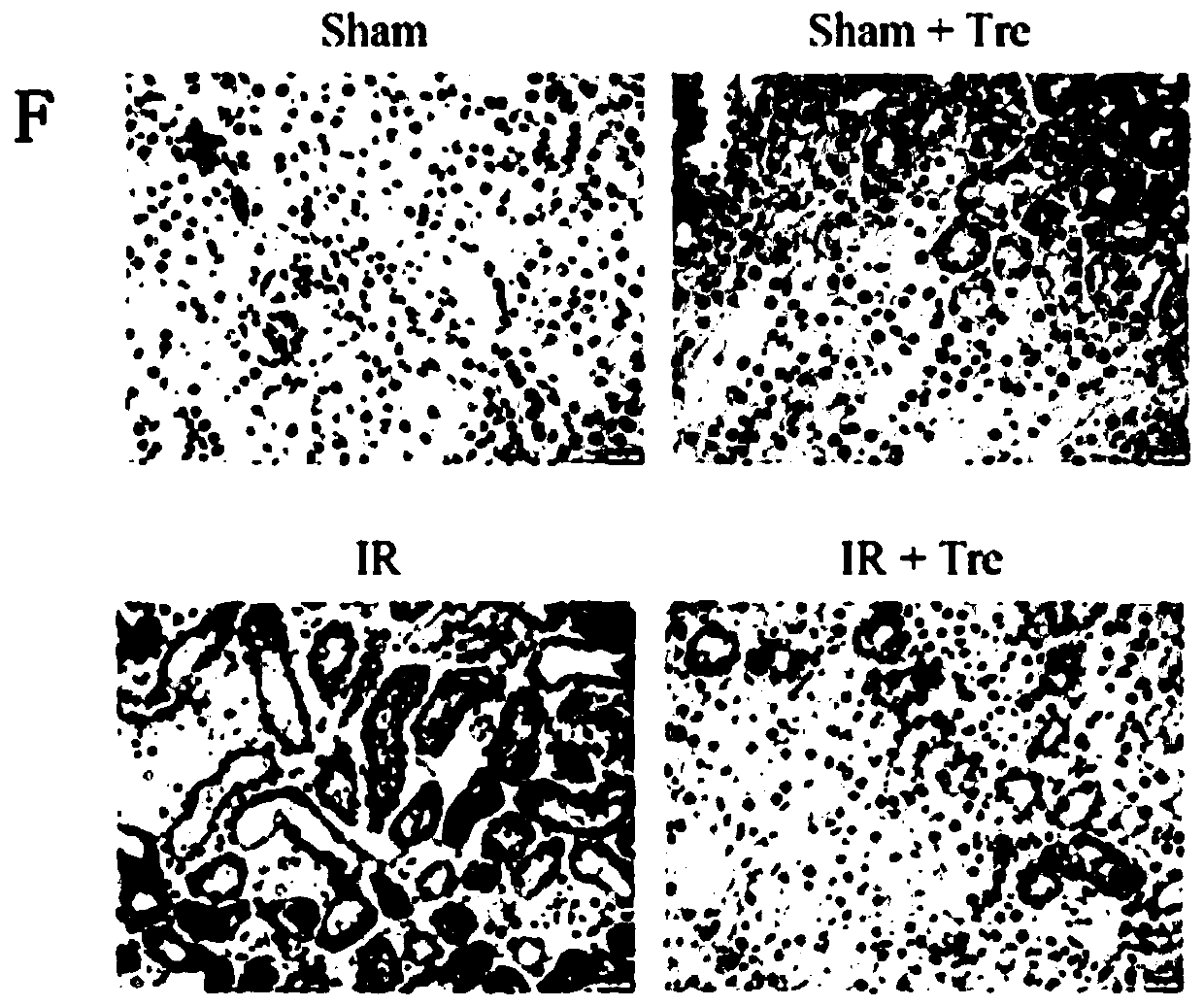Use of trehalose in preparation of medicament for alleviating ischemia-reperfusion-induced acute kidney injury-related disorders
A technique for ischemia-reperfusion and acute kidney injury, applied in drug combinations, cardiovascular system diseases, pharmaceutical formulations, etc., can solve problems such as damage to kidney structure and function, and achieve the effect of improving kidney function
- Summary
- Abstract
- Description
- Claims
- Application Information
AI Technical Summary
Problems solved by technology
Method used
Image
Examples
Embodiment 1
[0019] Embodiment 1 Materials and methods
[0020] 1) Materials and reagents
[0021] Trehalose was purchased from Sigma Company in the United States, NGAL antibody was purchased from Abcam Company, KIM-1, MPO, and 4-hydroxynonenal antibodies were purchased from R&D Systems Company, ATG5 was purchased from Nanjing Biotech Company, LC3B was purchased from Sigma-Aldrich Company, COX -2 was purchased from Cayman Company, and ATPB, IL-6, TNFα, SOD2, and β-actin antibodies were purchased from Proteintech Company. Fluorescent secondary antibodies were purchased from Invitrogen. CCK8 kit was purchased from KeyGen Biotech. Apoptosis detection kit was purchased from Vazyme Company. MDA and ROS detection kits were purchased from Beyotime Company. Mitochondrial membrane potential detection kit was purchased from Thermofisher.
[0022] 2) Cell culture and treatment
[0023] Mouse renal tubular epithelial cells (mPTCs) were cultured in DMEM / F12 medium containing 10% fetal bovine seru...
Embodiment 2
[0038] Example 2 Trehalose improves renal injury and renal function in an acute kidney injury model induced by ischemia-reperfusion
[0039] In order to evaluate the role of trehalose in the protection of renal ischemia-reperfusion injury, we detected the relevant biochemical indicators of the mouse kidney. After 24 hours of renal ischemia-reperfusion modeling, serum muscle and blood urea nitrogen indicators were significantly increased, while Renal tubular dilatation and necrosis and other renal pathological damage were also more serious, and after trehalose treatment, the corresponding renal damage and renal function indicators were significantly decreased ( figure 1 A, B, D). In addition, renal tubular damage score also suggested that trehalose treatment could improve renal pathological damage caused by cisplatin ( figure 1 C). Therefore, trehalose can not only improve renal function, but also reduce renal pathological damage. These results suggest that trehalose can pro...
Embodiment 3
[0041] Example 3 In the acute kidney injury model induced by ischemia-reperfusion, trehalose enhanced autophagy and relieved apoptosis and oxidative stress.
[0042] Apoptosis induced by renal ischemia-reperfusion injury was detected by TUNEL staining. Such as image 3 As shown in E, the number of TUNEL-positive cells in the renal tubules of ischemia-reperfused mice was significantly increased and significantly decreased after trehalose treatment. These findings suggest that Tre treatment attenuates apoptosis in a model of inner kidney ischemia-reperfusion injury.
[0043] Renal ischemia-reperfusion injury weakens the antioxidant capacity of the injured kidney and aggravates oxidative stress. The results of western blot analysis showed that trehalose treatment completely prevented ischemia-reperfusion-induced downregulation of mitochondrial respiratory chain-related proteins such as mitochondrial SOD (SOD2) and ATPB ( Figure 4 A-C). In addition, the detection results of M...
PUM
 Login to View More
Login to View More Abstract
Description
Claims
Application Information
 Login to View More
Login to View More - R&D
- Intellectual Property
- Life Sciences
- Materials
- Tech Scout
- Unparalleled Data Quality
- Higher Quality Content
- 60% Fewer Hallucinations
Browse by: Latest US Patents, China's latest patents, Technical Efficacy Thesaurus, Application Domain, Technology Topic, Popular Technical Reports.
© 2025 PatSnap. All rights reserved.Legal|Privacy policy|Modern Slavery Act Transparency Statement|Sitemap|About US| Contact US: help@patsnap.com



